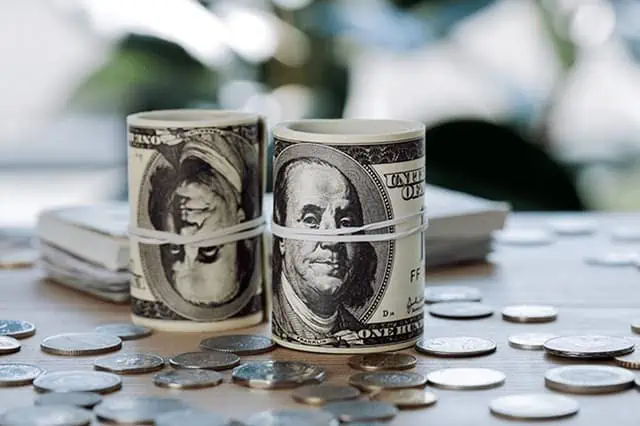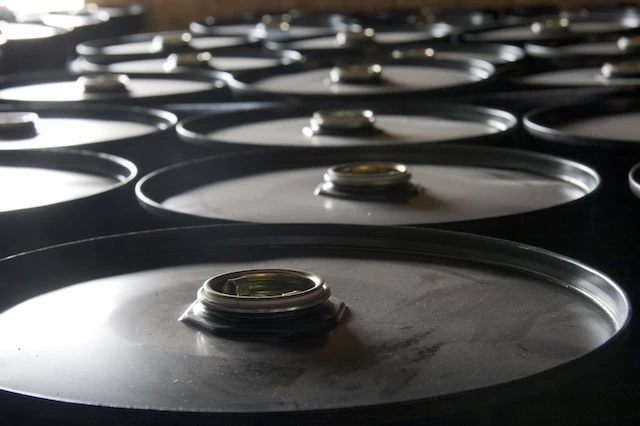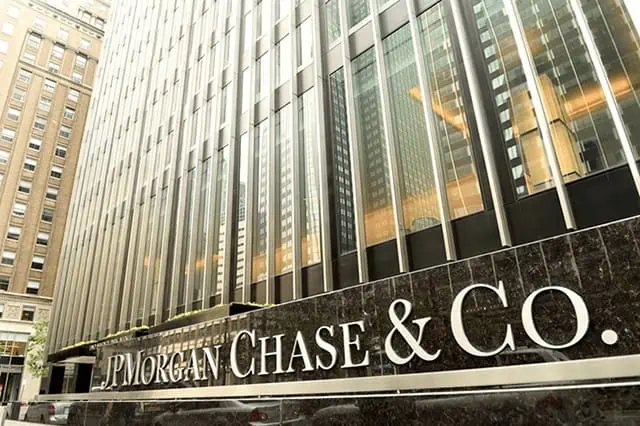If you’re interested in earning a high income stream from your investments, you should know (if you already don’t) that you can’t get something for nothing. Often, the more dividend yield you crave, the more risk you’re forced to take on.
But high-dividend ETFs can often help you tamp down that risk a little.
High-yield dividend ETFs, as the name implies, are funds that predominantly invest in assets that produce much more income than your average ETF. They do so by investing in specific corners of the market, exposing you to different areas of the world, or even using a few special market mechanics to make the cash-rich metaphorical sausage. And importantly, by spreading their assets out across dozens, hundreds, or even thousands of investments, they help reduce the risk to your portfolio of any single security suddenly imploding.
Want to learn more? Well, read on as I introduce you to a group of high-dividend ETFs that pay between 4.1% and 9.6% annually—or, put differently, anywhere between three to seven times the broader market.
Disclaimer: This article does not constitute individualized investment advice. These securities appear for your consideration and not as personalized investment recommendations. Act at your own discretion.
Editor’s Note: This article’s tabular data is up-to-date as of Nov. 7, 2024.
Table of Contents
Why Invest in Dividend Stocks via ETFs?

The top dividend-focused exchange-traded funds offer you a way to invest in many of these presumably high-quality stocks with just one purchase.
As a group, dividend stocks are pretty common, but they’re not created equally. Some companies only pay nominal dividends that are just a penny or two per share, with no prospect for dividend growth anytime soon. Others may offer generous but unsustainable dividend payouts that might be eliminated altogether in the future.
That’s why exchange-traded funds are a good alternative to individual dividend stocks. ETFs spread your money around, rather than force you to rely on one company’s specific strengths and weaknesses. And finding the best stocks capable of consistently paying dividends and enjoying significant future dividend growth can be a daunting task, even for seasoned investors. So instead, why not try to gain exposure to dividend-paying stocks via a single, diversified holding that’s tasked with finding great companies for you?
That’s what you’ll get in a dividend ETF.
How Were These High-Yield Dividend ETFs Selected?

Given that these are dividend ETFs, this list of funds is limited to those dealing with stocks—bond funds don’t apply.
There’s no universal definition of “high yield.” Much like beauty, a high dividend is in the eye of the beholder. But given that it’s a list of high-dividend ETFs, I have to set the floor somewhere, and that somewhere is 4.5%. That ensures you’ll earn more than a 10-year Treasury as of this writing, and at least three times what you’d get by investing in an S&P 500 index fund.
And as a quality check, I’ve only included dividend ETFs that have earned a Morningstar Medalist rating—Morningstar’s forward-looking analytical view of the fund—of at least Bronze. A quick explanation of why that matters, per Morningstar:
“For actively managed funds, the top three ratings of Gold, Silver, and Bronze all indicate that our analysts expect the rated investment vehicle to produce positive alpha relative to its Morningstar Category index over the long term, meaning a period of at least five years. For passive strategies, the same ratings indicate that we expect the fund to deliver alpha relative to its Morningstar Category index that is above the lesser of the category median or zero over the long term.”
Importantly, a Medalist rating doesn’t mean Morningstar is necessarily bullish on the underlying asset class or categorization. It’s merely an expression of confidence in the fund compared to its peers.
From the remaining universe of ETFs to choose from, I picked ETFs from a variety of sectors, geographies, and strategies. I also selected funds that have reasonable expense ratios—given their specialties, many of these cost more than a bland broad-market ETF, but they’re fair or low for their category.
An Important Note About Dividend ETFs

One last thing to know before diving into any dividend ETF: Their distributions tend to reflect the cash dividend payments of their underlying holdings. In other words, what you’re getting from an ETF in a quarter is more or less your share of all the dividends that all of the holdings made within that quarter.
But sometimes, individual components don’t always pay within each given quarter (even if they pay quarterly). Also, they occasionally increase regular dividends, make special payouts, or cut or even suspend regular dividends. As a result, ETFs can have “lumpy” distributions that change from one quarter to the next.
Here’s an example: In a 12-month period, the SPDR S&P 500 ETF Trust (SPY)—the largest ETF by assets on the planet, and thus one of the most commonly owned—paid out quarterly dividends of $1.59, $1.91, $1.58, and $1.63 per share. That’s a 20%-plus difference between the smallest and largest payouts.
If you’ve not yet reached retirement, this inconsistency probably won’t matter to you at all. But it could be problematic—or at the least, worth planning around—if you are in retirement and heavily depend on dividend income to pay your regular bills. So especially if you’re in the latter boat, when you research dividend funds, I highly suggest not just looking at yield, but at distribution history, too.
Best High-Dividend ETF #1: Franklin International Low Volatility High Dividend ETF

— Assets under management: $1.4 billion
— Expense ratio: 0.40%, or $4.00 per year on every $1,000 invested
— Dividend yield: 4.1%
— Morningstar Medalist rating: Silver
Any group of favorably rated high-yield dividend ETFs is bound to include at least a couple international stock funds. Large, established dividend payers abroad—especially in developed countries—have for years tended to pay more than their U.S. counterparts, in part because the long-term outperformance of U.S. stocks has depressed yields.
Related: The 10 Best Vanguard Index Funds You Can Buy
Young and the Invested (YATI) Tip: To calculate dividend yield for a stock, you take the annual dividend per share and divide by the stock price. Thus, if a stock’s price goes up, its yield will go down.
And given what Franklin International Low Volatility High Dividend ETF (LVHI) is trying to do, its portfolio is necessarily stuffed with large, established dividend payers.
LVHI is an index fund designed to provide a portfolio of high-yielding dividend stocks with low price and profit volatility. Its screening process involves identifying dividend-paying companies that can pay “relatively high sustainable dividend yields,” then grading yields based on price and earnings volatility. LVHI also puts various limits on the portfolio to eliminate overconcentration risk—for instance, no stock can make up more than 2.5% of the index at quarterly rebalancing, and no country can make up more than 15%.
And to further tamp down on volatility, LVHI hedges against currency fluctuations.
The result is a roughly 120-stock portfolio thick in large-cap stocks (~80%) from about 20 developed nations, including Japan (17%), the U.K. (13%), Canada (12%), and Italy (9%). Top holdings include the likes of French integrated energy giant TotalEnergies (TTE), Dutch Chrysler parent Stellantis (STLA), and German automaker Mercedes-Benz Group. The result of holding all of these large international names is not only a 4.0%+ yield, but much lower risk compared to LVHI’s category average.
One last thing: The “lumpy” dividends I mentioned earlier? These are really exacerbated in international dividend funds, as foreign companies often pay just semiannually or even annually. For instance: LVHI’s four most recent quarterly dividend payments ranged from 3.7¢ to 59.6¢!
Related: The 7 Best T. Rowe Price Funds to Buy and Hold
Best High-Dividend ETF #2: WisdomTree Emerging Markets High Dividend Fund

— Assets under management: $2.8 billion
— Expense ratio: 0.63%, or $6.30 per year on every $1,000 invested
— Dividend yield: 5.3%
— Morningstar Medalist rating: Gold
The WisdomTree Emerging Markets High Dividend Fund (DEM) drills for dividends in a less likely basin: emerging markets (EMs).
Related: The 10 Best Vanguard Index Funds You Can Buy
Whereas developed markets tend to be defined by low growth but relative economic and political stability, emerging markets go the other way—these countries are often developing rapidly, offering the potential for high growth, but they might also have higher-risk aspects such as unstable governments, poor market controls, and economies that are highly dependent on just a handful of goods. So while emerging markets are typically a hotbed for growth investors, dividend seekers typically sit these countries out.
But emerging markets do sport at least a few high dividend payers, and DEM aims to hold them.
The fund’s underlying index targets the highest-paying stocks across 18 emerging markets. The selection criteria include minimums for market capitalization ($200 million), trading volume (250,000 shares over the past six months), and median daily dollar trading volume ($200,000 over the past six months).
Related: The 13 Best Mutual Funds You Can Buy
DEM’s resulting 480-stock portfolio is more than 75% large-cap, with another 15% in mid-caps and the rest in small-caps or cash. While all the applicable EMs are accounted for, they’re not even remotely represented equally. Taiwan has a massive presence in DEM, at 25% of assets, followed by China (21%) and Brazil (14%). Meanwhile, the likes of the Philippines, Hungary, and Turkey all have sub-1% weights. It’s top-heavy from a sector perspective—financials are a quarter of the fund, energy is another 22%, and tech makes up 21%. Top 10 holdings include the likes of Taiwanese semiconductor company MediaTek, Chinese energy giant PetroChina (PCCYF), and Brazilian metals and mining firm Vale (VALE).
Also, like with LVHI, DEM’s distributions are mighty lumpy. The past four quarterly payouts have been 31.5¢, 22.5¢, 63.5¢, and $1.06.
Related: 9 Monthly Dividend Stocks for Frequent, Regular Income
Best High-Dividend ETF #3: SPDR S&P Global Dividend ETF

— Assets under management: $202.0 million
— Expense ratio: 0.40%, or $4.00 per year on every $1,000 invested
— Dividend yield: 4.5%
— Morningstar Medalist rating: Bronze
Another note about ETF investing: “Global” and “international” are not the same thing. If you see “international” in a fund’s name, that tends to mean it owns securities from countries around the world—but not the U.S. However, a “global” fund will hold both international and U.S. stocks.
Related: 12 Best Long-Term Stocks to Buy and Hold Forever
So while the SPDR S&P Global Dividend ETF’s (WDIV) is predominantly international in nature, it also provides exposure to several high-yielding U.S. dividend stocks.
WDIV has a focus most income investors can appreciate: It aims to own not just high-dividend stocks, but stocks that also provide income stability and even dividend growth. It tracks the S&P Global Dividend Aristocrats Index, which starts with a universe of companies from the S&P Global Broad Market Index (BMI) that have increased or kept dividends stable for at least 10 consecutive years. It then selects the 100 highest-yielding stocks from that group, though it limits itself to 20 picks from any given country. (It also limits single-country and sector exposure to 25% of assets at rebalancing.)
The end result is a portfolio that’s roughly 75/25 split between international and U.S. stocks; that’s a huge departure from your typical global fund, which tends to be closer to 50/50. The international allocation is currently heaviest in Canadian (20%), Japanese (13%), and Hong Kong (8%) stocks. From a sector perspective, financials (26%), utilities (17%), and real estate (12%) have the most say in performance.
Related: 5 Best Vanguard Retirement Funds [Start Saving in 2024]
WDIV also differs from the other international funds in that it’s not nearly so heavy in mega-corporations. Large caps are less robustly represented at 50% of assets, while mids are nearly 40%, and smalls make up the rest. You’ll find names you know, like big U.S. dividend payers such as Verizon (VZ) and Altria (MO), as well as less ubiquitous brand names like Belgian chemical company Solvay and Canadian oil-and-gas firm Keyera.
Few funds provide access to any amount of traditional U.S. blue-chips and yield around 5%. WDIV is an exception.
Related: WealthUp’s Winningest Tech Stocks for 2024
Best High-Dividend ETF #4: Global X MLP & Energy Infrastructure ETF

— Assets under management: $2.1 billion
— Expense ratio: 0.45%, or $4.50 per year on every $1,000 invested
— Dividend yield: 4.4%
— Morningstar Medalist rating: Bronze
The Global X MLP & Energy Infrastructure ETF (MLPX) has earned more than a Bronze Morningstar Medalist rating—it has also earned a spot among our 24 best ETFs for 2024.
The Global X MLP & Energy Infrastructure ETF (MLPX) gives investors exposure to energy infrastructure. That means pipelines, storage, terminals, and other assets involved in the transportation and holding of oil, gas, and other energy commodities.
Related: 5 Best Fidelity Retirement Funds [Low-Cost + Long-Term]
What’s odd about MLPX, though, is that it tries to minimize how much of its assets are invested in master limited partnerships (MLPs). Instead, it prioritizes general partners (GPs) that own MLPs, as well as other energy infrastructure companies. It does so because MLPs are a different type of business structure that comes with its own set of tax rules—and by limiting MLP ownership, MLPX limits fund-level taxes.
The energy infrastructure industry isn’t very big to start with, so its tight 25-holding portfolio shouldn’t be much of a surprise. Top holdings include Williams Cos. (WMB), Oneok (OKE), and Enbridge (EMB), all of which enjoy roughly 8%-9% weights each.
So, why MLPX? Well, you can get a pretty decent yield of 4%-plus by investing in a regular energy-sector ETF like the Energy Select Sector SPDR ETF (XLE). However, most of those holdings tend to be more sensitive to changes in oil and gas prices. Infrastructure firms, on the other hand, are more like toll booth operators, charging for whatever commodities pass through their facilities—so while they’re hardly immune from global energy supply-and-demand dynamics, they tend to be less price-sensitive and more defensive in nature. They also tend to yield considerably more.
Related: 7 Best Schwab ETFs to Buy [Build Your Core for Cheap]
Best High-Dividend ETF #5: Hoya Capital High Dividend Yield ETF

— Assets under management: $91.3 million
— Expense ratio: 0.50%, or $5.00 per year on every $1,000 invested
— Dividend yield: 9.6%
— Morningstar Medalist rating: Silver
Another high-yielding area of the market is the real estate sector.
While many real estate investments are privately held and difficult to access, the average Joe can still invest in properties through their brokerage account or IRA via publicly traded real estate investment trusts (REITs).
Congress literally created REITs in 1960 to allow common investors to participate in real estate investing. REITs own and often operate properties—anything from apartments and grocery stores to casinos and driving ranges. They trade just like regular stocks, but they have one particular condition that’s attractive to income hunters. That is, they receive generous tax breaks in exchange for distributing at least 90% of their taxable income to investors—in the form of dividends. As a result, REITs tend to be one of the market’s highest-yielding sectors.
The Hoya Capital High Dividend Yield ETF (RIET) invests in 100 high-yielding real estate securities—mostly the common stock of REITs, but also preferred shares (which I’ll discuss in more detail when I discuss the next fund). The fund divides its assets across five categories:
1. 10 “Dividend Champions” (15% weight) – REITs of any market capitalization that have the highest yield in their property sector
2. 10 large-cap REITs (15% weight)
3. 25 mid-cap REITs (30% weight)
4. 25 small-cap REITs (30% weight)
5. 30 preferreds (10% weight)
Related: 13 Dividend Kings for Royally Resilient Income
At the moment, top holdings include office REIT Kilroy Realty (KRC), storage giant Extra Space Storage (EXR), and mall giant Simon Property Group (SPG).
It’s a young fund—inception was in September 2021, so it has less than three years of track record to study. But Morningstar has awarded it with a Silver Medalist rating—the best rating by far among exceptionally high-yielding REIT ETFs—thanks in part to its low fees, highly liquid holdings, and defensive tilt.
Also worth noting? RIET is a rarity in that it’s a monthly dividend ETF—rather than quarterly, it pays dividends each and every month. The monthly dividend has remained consistent since inception, with the exception of a 2%-plus hike in 2023. It’s a blessing and a curse. Yes, it means investors know what they’re getting every month. However, each monthly distribution is made up of varying levels of actual dividend income and “return of capital,” which is treated differently from a tax perspective. So again, check the distribution history and tax documents, and understand the consequences, before you invest.
Related: How to Get Free Stocks for Signing Up: 8 Apps w/Free Shares
Best High-Dividend ETF #6: iShares Preferred & Income Securities ETF (PFF)

— Assets under management: $15.3 billion
— Expense ratio: 0.46%, or $4.60 per year on every $1,000 invested
— SEC yield: 6.0%*
— Morningstar Medalist rating: Gold
Let’s say you want to buy shares of Apple (AAPL). You go look up “AAPL” in your brokerage account and hit “buy.” Those shares you just bought are referred to as “common stock.” In general, 99.9% of the time, if someone is talking about stock, they’re talking about common stock.
Related: Best Schwab Retirement Funds for an IRA
But if you want, you can invest in another, far less noticed type of stock: Preferreds.
Preferred stocks are often referred to as “hybrids” because they share some elements of common stock, but some elements of bonds. For instance, preferred stocks trade on an exchange, represent ownership in a company, and typically pay qualified dividends (which enjoy long-term capital gains tax rates). However, preferred stocks typically don’t have voting rights, tend to trade around a par value, and distribute a fixed level of income—all qualities of bonds.
They’re called “preferred” because their dividends have preference over common-stock dividends. For instance, if a company wants to cut its dividends, it must do so to common-stock dividends before it touches preferreds. And many preferreds are also “cumulative,” meaning that if a dividend payment is missed, it must be paid before the company can start paying common shareholders again.
This combination of traits results in an asset that doesn’t have the explosive upside of common stock, but is more defensive like a bond, and that also tends to offer much higher yields than what a company’s common stock will deliver.
Related: 10 Best Dividend Stocks to Buy [Steady Eddies]
The problem is, compared to commons, there’s very little information available about preferreds. They’re difficult for the average investor to analyze and compare. So similarly to bonds, it often makes more sense to own a collection of them via an ETF. As a result, preferred funds—like the iShares Preferred & Income Securities ETF (PFF)—tend to be some of the best-yielding high-dividend ETFs you can find.
The PFF is the largest preferred ETF on the market. It’s a collection of about 450 preferred stocks—a little more than half of which are investment-grade, with the rest falling in “junk” territory or simply not rated at all. It’s also a typical preferred ETF in that most of its holdings come from financial institutions, such as banks, insurers, and asset managers. Top holdings right now include preferreds from Wells Fargo (WFC), Citigroup (C), and Bank of America (BAC).
At the moment, PFF yields more than 6%. For comparison’s sake, if you were to invest in an ETF primarily made up of common stock from big banks and other large financials, you’d earn a yield closer to 1.5%-2%. So if you’re looking for high yield but more conservative price action, PFF is among the best dividend ETFs you can own.
* SEC yield reflects the interest earned across the most recent 30-day period. This is a standard measure for funds holding bonds and preferred stocks.
Related: 9 Best Fidelity Index Funds to Buy
Best High-Dividend ETF #7: JPMorgan Equity Premium Income ETF

— Assets under management: $36.9 billion
— Expense ratio: 0.35%, or $3.50 per year on every $1,000 invested
— Dividend yield: 8.0%
— Morningstar Medalist rating: Bronze
While most high-dividend ETFs deliver high yields by simply owning high-yield securities, a few funds go about it from a different angle—using options and other market mechanics to generate yield instead.
Related: 7 Best High-Dividend ETFs for Income-Minded Investors
Take the JPMorgan Equity Premium Income ETF (JEPI), for instance.
At a glance, JEPI’s 130-plus portfolio holdings wouldn’t make you blink an eye. It’s an 85/15 split of large- and mid-cap stocks—roughly the same split you’ll find in an S&P 500 index tracker. Positions such as Amazon (AMZN), Microsoft (MSFT), and AbbVie (ABBV) would be found in any ol’ large-cap fund. And that fund would likely yield somewhere in the 1%-2% range.
But JEPI yields more than 7%.
That’s because JEPI doesn’t merely hold these stocks. It also engages in selling covered calls—a type of options trading that’s designed to generate income using stocks you already own. The downside to this strategy: You can limit your upside in your underlying holdings. The upside? You can reduce volatility and reap healthy dividend payments.
It’s rare that an options-trading strategy earns a Morningstar Medalist rating. Morningstar’s reason behind its Bronze award for JEPI: “This fund’s high payouts, reduced path dependency, and lower-risk equity portfolio work to its advantage compared with category rivals. Its underlying index, the S&P 500, is also a reasonable choice for a covered-call strategy. The S&P 500 has enough upside and options liquidity to provide harvestable call premiums, while not being overly volatile like some of the indexes used by category peers.”
Related: 7 Best Fidelity ETFs for 2024 [Invest Tactically]
A Note About Dividend Yields

A term you’re going to want to familiarize yourself with is dividend yield.
A dividend yield tells you how much of your investment you can expect to get back in the form of dividends. A stock’s dividend yield, for instance, is calculated on an annualized basis, and expressed as a percentage of share price. Example: If a stock trades for $50 and pays 25 cents per quarter, that’s $1.00 in annual payouts—or 2.0% of the share price. So its dividend yield is 2.0%.
But a fund’s dividend yield is calculated a little differently. It’s much more difficult to estimate future payouts for an ETF or mutual fund because they own groups of many different stocks paying on changing cycles.
The fairest way to measure yield in dividend ETFs and mutual funds is to calculate the distributions over the last calendar year. Dividends might change for these funds going forward, but a trailing 12-month look is the most faithful way to calculate yield.
What is Yield-on-Cost?

When you look up an ETF’s information, the dividend yield listed is based on the past year’s worth of dividend payments and the current ETF share price.
That yield is often very different than the one current ETF shareholders enjoy. That yield is called “yield on cost,” which is the payout based on what you said, at the moment you invested.”
Let’s say you buy an ETF at $100, and it pays $1 per share annually. It yields 1.0% when you buy it ($1 / $100 x 100 = 1.0%).
In a year, that ETF has doubled to $200 per share, but the dividends it pays also doubled, to $2 per share. If you look up its information, its dividend is still 1.0% ($2 / $200 x 100 = 1.0%).
That’s not your yield on cost, however. You’re still receiving that higher dividend of $2 per share. But your cost basis is still the original $100 you bought the ETF share at. So now, your yield on cost has doubled, to 2.0% ($2 / $100 * 100 = 2.0%)!
How Do Dividend ETFs Pay Investors?

When you own an ETF, you own parts of shares of various dividend stocks with different payout schedules. However, you don’t get paid when those stocks pay out—you get paid based on the ETF’s payout schedule.
Dividend ETFs pay their investors the same way as dividend stocks do, with deposits appearing on your brokerage statement on a regular cycle. Some funds—like the Global X SuperDividend ETF (SDIV)—pay you on a monthly cycle. But the majority, including the other six dividend ETFs on this list, all pay on a quarterly schedule, which is similar to most U.S. dividend stocks.
Why Does a Fund’s Expense Ratio Matter So Much?

Every dollar you pay in expenses is a dollar that comes directly out of your returns. So, it is absolutely in your best interests to keep your expense ratios to an absolute minimum.
The expense ratio is the percentage of your investment lost each year to management fees, trading expenses and other fund expenses. Because index funds are passively managed and don’t have large staffs of portfolio managers and analysts to pay, they tend to have some of the lowest expense ratios of all mutual funds.
This matters because every dollar not lost to expenses is a dollar that is available to grow and compound. And over an investing lifetime, even a half a percent can have a huge impact. If you invest just $1,000 in a fund generating 5% per year after fees, over a 30-year horizon, it will grow to $4,116. However, if you invested $1,000 in the same fund, but it had an additional 50 basis points in fees (so it only generated 4.5% per year in returns), it would grow to only $3,584 over the same period.
Related: 6 Best Stock Recommendation Services [Stock Picking + Tips]

Stock recommendation services are popular shortcuts that help millions of investors make educated decisions without having to spend hours of time doing research. But just like, say, a driving shortcut, the quality of stock recommendations can vary widely—and who you’re willing to listen to largely boils down to track record and trust.
The natural question, then, is “Which services are worth a shot?” We explore some of the best (and best-known) stock recommendation services.
Related: 12 Best Long-Term Stocks to Buy and Hold Forever
As even novice investors probably know, funds—whether they’re mutual funds or exchange-traded funds (ETFs)—are the simplest and easiest ways to invest in the stock market. But the best long-term stocks also offer many investors a way to stay “invested” intellectually—by following companies they believe in. They also provide investors with the potential for outperformance.
So if your’e looking for a starting point for your own portfolio, look no further. Check out our list of the best long-term stocks for buy-and-hold investors.
Related: 9 Best Monthly Dividend Stocks for Frequent, Regular Income

The vast majority of American dividend stocks pay regular, reliable payouts—and they do so at a more frequent clip (quarterly) than dividend stocks in most other countries (typically every six months or year).
Still, if you’ve ever thought to yourself, “it’d sure be nice to collect these dividends more often,” you don’t have to look far. While they’re not terribly common, American exchanges boast dozens of monthly dividend stocks.
Please Don’t Forget to Like, Follow and Comment

Did you find this article helpful? We’d love to hear your thoughts! Leave a comment with the box on the left-hand side of the screen and share your thoughts.
Also, do you want to stay up-to-date on our latest content?
1. Follow us by clicking the [+ Follow] button above,
2. Subscribe to The Weekend Tea, our weekly newsletter to read more about investing, spending, taxes, and more, and
3. Give the article a Thumbs Up on the top-left side of the screen.
4. And lastly, if you think this information would benefit your friends and family, don’t hesitate to share it with them!





